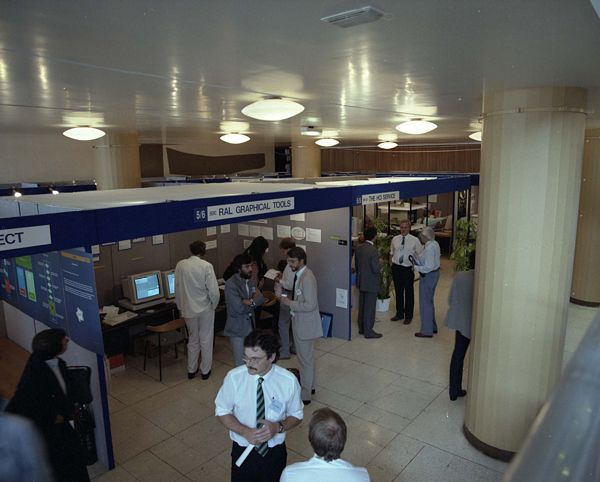

Informatics staff had a long history of involvement with high powered single user workstations. Perq and Sun workstations had been purchased by SERC in substantial quantities. In addition, Whitechapel, Apollo, IBM and Silicon Graphics workstations had been used in specific areas. For the Engineering Board programme and Alvey, there had been a need to assess new workstations and to harmonise software on those acquired. A major problem was the lack of standardisation of interfaces between workstations and applications and a number of developments took place to make software portable.
The WW Toolkit was initiated around 1983/4 to provide a portable library for developing highly interactive applications. The existing window management systems varied markedly in user and application programmer interfaces and in functionality. WW provided tools which fitted on top of the early window management systems to isolate programmers from these vagaries as far as possible. Tools included window management functions such as opening windows, copying parts of windows, and defining cursors. Graphics functions such as drawing lines, mouse input with standard interpretations of the buttons and fill area were also provided. Support for pop-up menus was rationalised.
Nobody remembers why it was called WW! Interfaces were available for Pascal (Janet Haswell), Fortran (Crispin Goswell) and C (Mark Martin). A series of projects using WW were undertaken. These included a file tree wanderer and a program to help in selecting command line options in UNIX (Mark Martin); a dynamic, graphical version of ps (Chris Crampton); and a tool to permit window description files to be created (Crispin Goswell).
The Toolkit shielded the user from the eccentricities of a particular system. For example, by defining a specific button on a mouse to activate pop-up menus, a house-style could be introduced across a range of workstations. Buffering picture updates and providing efficient fill area functions (independent of pixel to computer word mapping) ensured interaction quality independent of system representations.
WW was used in applications in Informatics and elsewhere. Software items were provided in source code form to act as exemplars for other applications developers. Experience gained with the SPY screen editor, an early RAL development, was used to provide an even richer-functionality screen editor which was WW-based and hence much more portable.
Early on, the work needed to port WW to a new window management system was extensive owing to the different ways in which similar functionality was implemented. To harmonise window management systems from different vendors, UK suppliers collaborated with Informatics to define the Client Server Interface (CSI) recommended at the Window Management Workshop. This provided a lower level interface than WW and which of the vendor window manager supported.
WW was rewritten in terms of CSI so that WW could be quickly made available on any window management system supporting CSI. The first two with this support were the PERQ and Sun workstations.
